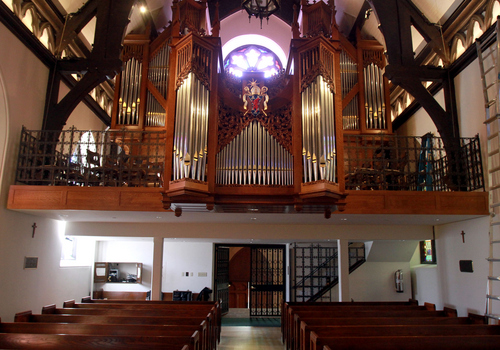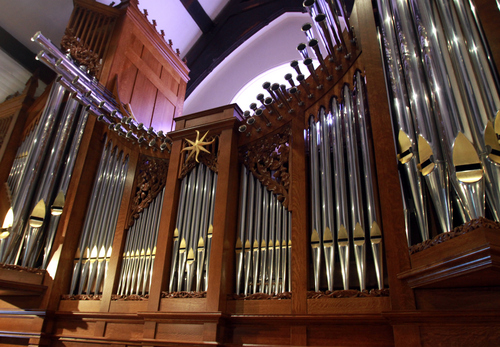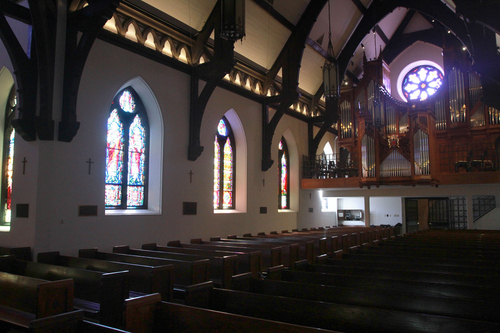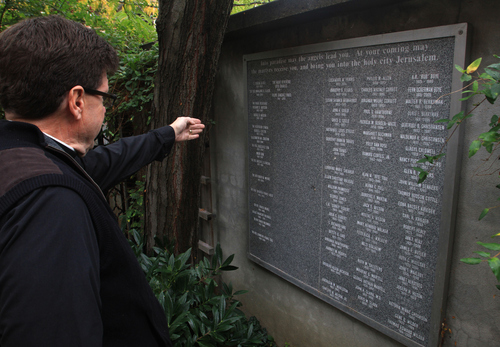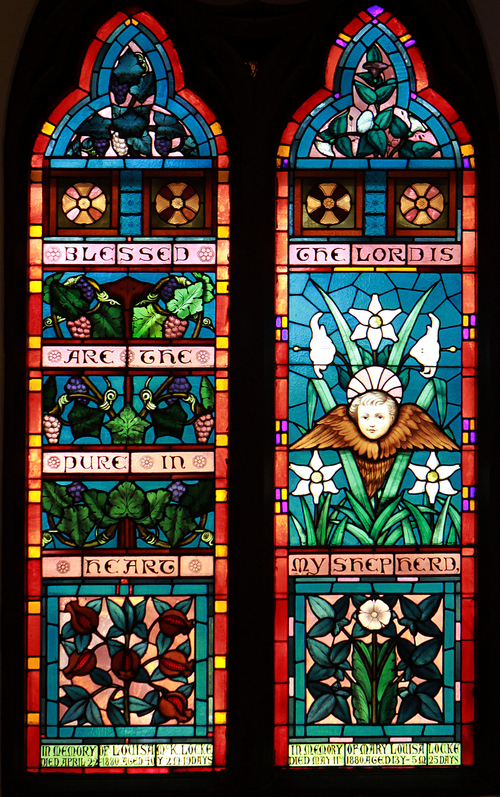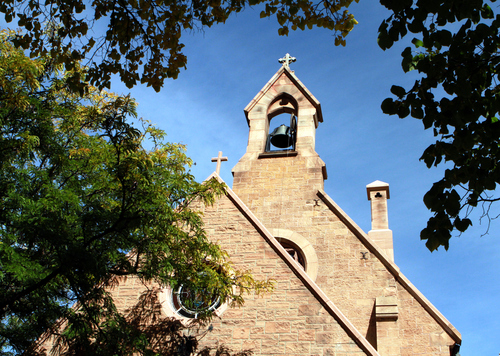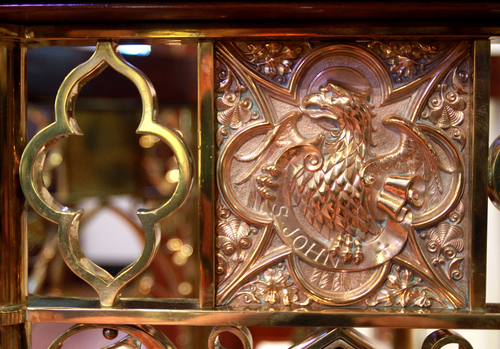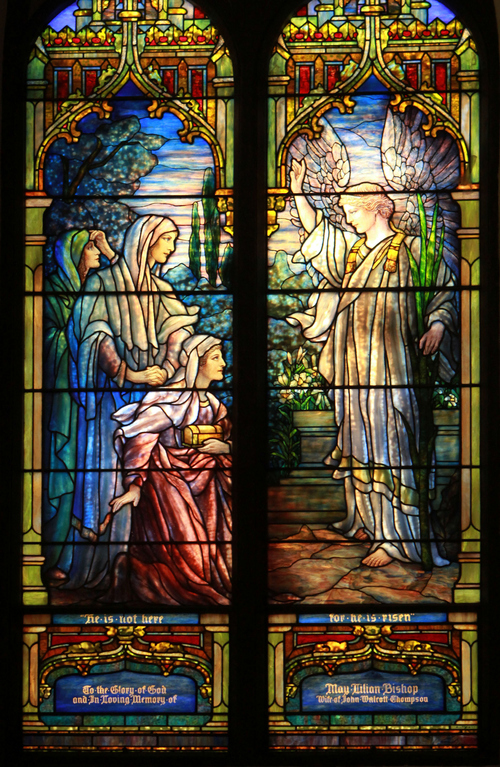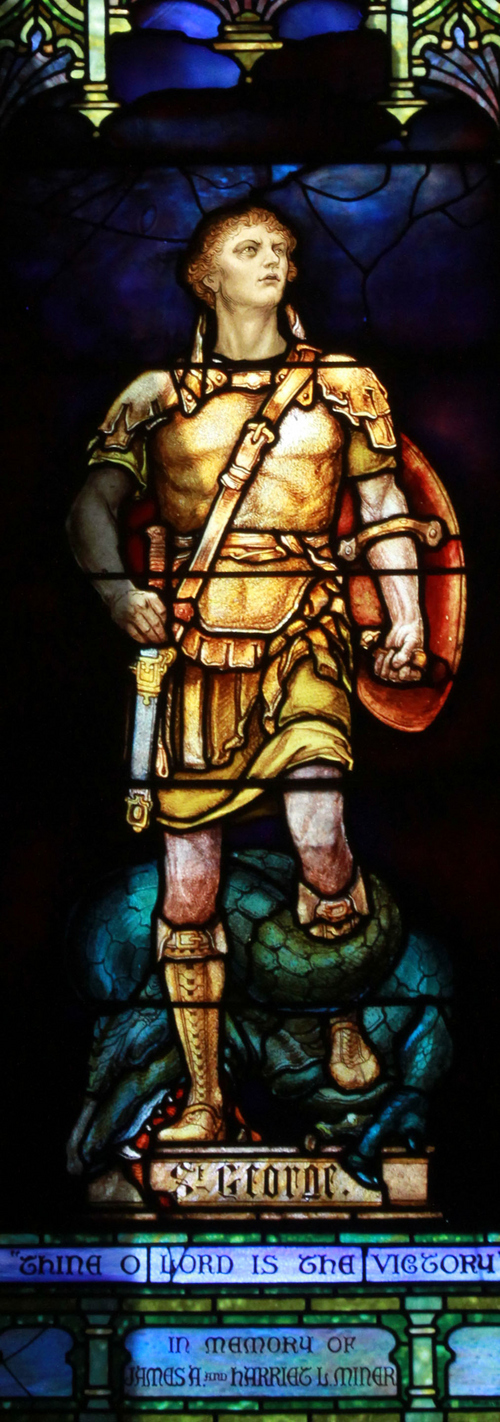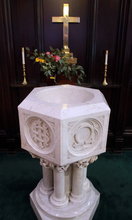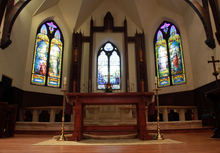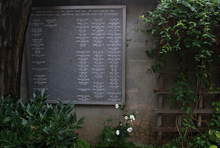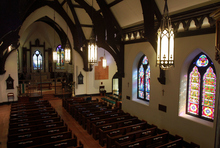This is an archived article that was published on sltrib.com in 2013, and information in the article may be outdated. It is provided only for personal research purposes and may not be reprinted.
Traditional Episcopal cathedrals on the East Coast are typically ornate, awash in finely carved statues and arched ceilings that draw the eye heavenward.
St. Mark's Episcopal Cathedral has a decidedly different feel.
Yes, the downtown Salt Lake City edifice is Gothic Revival and shares a design with New York's famed Trinity Church, and, yes, its ceilings are lofty. But Utah's premier Episcopal showplace, with its dark wood beams and red sandstone exterior, reflects the durability of the mountains rather than the elegance of the city.
And, with only 500 seats, it feels more intimate than many cathedrals — as if the Holy Spirit is whispering in your ear, not thundering from a distant pulpit.
"When I walked in the great doors," says the Rev. Ray Waldon, dean of St. Mark's who arrived two years ago from Talladega, Ala., "I truly felt God's presence."
The cathedral is the Beehive State's second oldest church — after the Tabernacle on Salt Lake City's LDS Temple Square — in continual use. Its cornerstone was laid in 1870 and its biggest donor was Brigham Young, who pitched in $500. (The multi-married Mormon prophet generously contributed despite the fact that some early Episcopalians came to Utah to rescue LDS women from polygamy.)
Daniel S. Tuttle became the Episcopal bishop of Montana in 1867, and his area included Utah and Idaho. Tuttle settled in Salt Lake City and launched plans for a cathedral in the heart of Mormondom.
He enlisted the help of distinguished New York artisan Richard Upjohn, founder of the American Institute of Architects, who donated his blueprints to the Utah congregation. Trinity was Upjohn's first church design; St. Mark's would be his last.
It initially was a rectangular space, with stained-glass windows featuring biblical scenes on each side and in front. Many of them were created by Tiffany in New York and then shipped west.
"The simple, traditional design was based on [Tuttle's] desire to reflect the values and the spirit of frontier America," according to the church's official history. It was meant to "reflect the determination of the designers and builders to achieve permanence in a frontier community."
The new structure was consecrated May 14, 1874, and Tuttle noted in his journal, "When completed, our church will have cost, I fear, $40,000. Alas! Alas!"
At that time, most Utah Episcopalians were miners or railroad workers, says Craig Wirth, the diocese's director of communications. "And all of them in the territory could have fit in the cathedral."
Transepts — side wings — were added later, and, by 1901, the chancel and sanctuary were completed. A large mahogany "bishop's chair" was given to Tuttle by a friend and transported to Utah by boat, sailing around Cape Horn.
"Prayers and tears and hopes and fears and sacred memories, as well as altar and walls and gifts and memorials were consecrated in that noble building in the mountains," wrote Tuttle, who eventually became the denomination's presiding bishop, "to which my heart turns now in the deepest tenderness."
On Easter Sunday 1935, a fire swept through the sanctuary, blowing out the windows behind the altar.
One parishioner, Wirth says, gathered up all the shards from the windows, put them in a suitcase and carried them by train to New York, where they were painstakingly reassembled and ultimately reinstalled. There are hints of the damage in the window on the left, which depicts the "Appearance of the Angel to the Three Marys."
"You can still see a dark area on one of the women's robe," Wirth says. "That's where it was burned."
Throughout St. Mark's history, the sanctuary has been repaired, renovated and retrofitted.
Its organ was moved in the 1960s from near the west transept to the choir loft, but its pipes covered the original rose window. Two years ago, the church commissioned construction of a new organ, which was built out farther, revealing the rose window again.
At the beginning of the 21st century, Altar Guild member Colleen Malouf led a team of 35 stitchers in creating needlepoint symbols and scenes on kneeler cushions, used to pray.
The dean's chair, for example, carries the image of a lion, which represents the coming of the kingdom of God. His kneeler has the cross of Christ and the flame of the Holy Spirit.
The stitchers are now taking up another project: 26 needlepoint cushion for kneelers in every church and group in the diocese, which has about 5,000 members across Utah.
Barbara Losse has been worshipping at St. Mark's since 1955.
Her family moved from St. Louis when young Barbara was 8. She was confirmed three years later, sang in the children's choir, attended the early service for young people and joined in the church's activities.
In her 20s, Losse left Utah for a while but eventually found her way back to St. Mark's and has never left.
"I am liturgical, and I love the pomp and ceremonies," she says, "but mostly St. Mark's feels comfortable. The distinction between sacred space and a gathering place is blurred."
The cathedral, which is on the National Register of Historic Places, hosts many events, including interfaith gatherings and concerts, Losse says. "It is important that it not be a once-a-week place."
Losse now works for the diocese, and her parents' and sister's ashes are buried on the west side of the cathedral, under the pavers that line the walkway. Their names are inscribed on a marble wall running alongside the church.
It is called a columbarium — meant to house cremated remains — and was the brainchild of Elvira Charles, the former wife of Utah's Bishop Otis Charles, who served the diocese from 1971 to 1986.
After he retired, in 1993, the couple divorced. Otis Charles announced publicly that he was gay and moved to San Francisco. In 2004, he and Felipe Sanchez-Paris had a commitment ceremony. Four years later, they married.
On Saturday, Paris' ashes will be interred at St. Mark's.
For Waldon, the dean, such a burial is a fitting reminder that church is at the center of life's passage from birth to death.
Looking out of his window, he says, "you can't help but think God's church has been here forever."
This cathedral, he says, is one for the ages.
Twitter: @religiongal —
'Where We Worship' series
O The Salt Lake Tribune is featuring Utah's sacred spaces this year. To read previous stories in this monthly series, go to http://www.sltrib.com
Today • St. Mark's Episcopal Cathedral in Salt Lake City —
Location • 231 E. 100 South, Salt Lake City
Built • 1874
Size • Seats 500
Cost • $40,000
Architect • Richard Upjohn
Features • Sandstone exterior, vaulted ceilings with wood beams, mahogany bishop's chair, needlepoint seat cushions and kneelers


